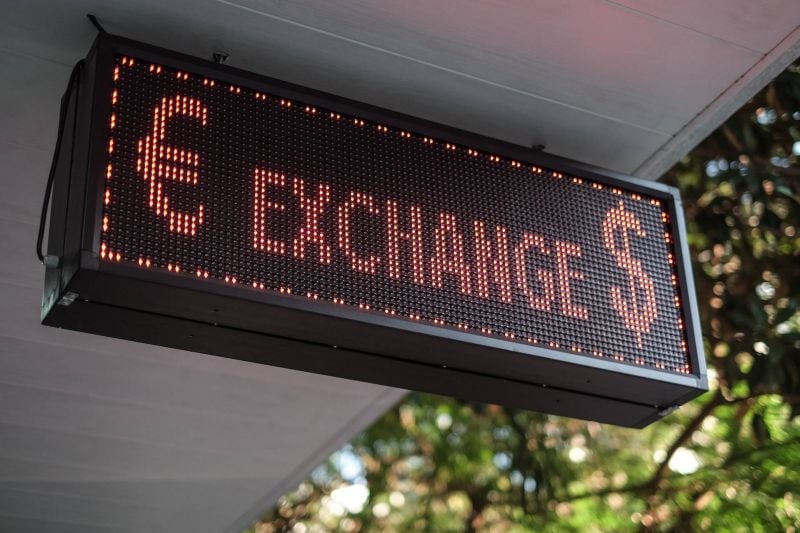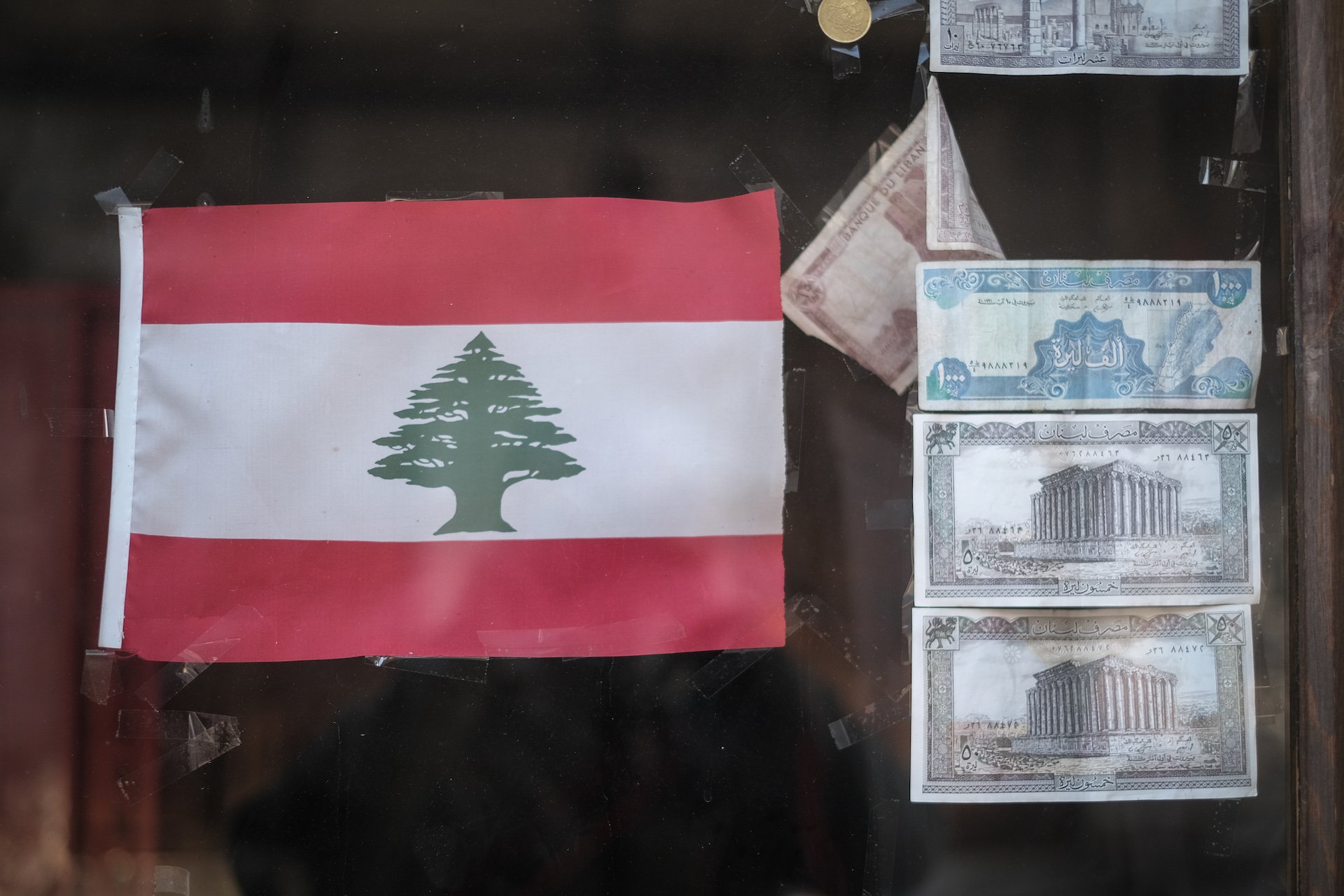
An exchange shop in Beirut. (Credit: João Sousa/L'Orient Today/File photo)
This article is part two of a three-part series. Read part one here and part three here.
2024 has dawned upon us, bringing Lebanon into its fifth year of economic crisis — one of historic, unprecedented magnitude. The last few years have seen the country’s currency decimated, losing more than 98 percent of its value since 2019.
The Lebanese lira was pegged at a rate of LL1,507 to the US dollar from 1997 until October 2019, after which it went into a free-fall depreciation, reaching an all-time low of LL140,000 on the parallel market in 2023.
Since March 2023, however, the lira has not surpassed an LL100,000-to-the-dollar rate, and remains oddly stable today, hovering around LL89,000, despite the outbreak of the war in Gaza and the political uncertainty.
While the International Monetary Fund (IMF) continues to call for a floating exchange rate system, other local and international experts alternatively advocate for full dollarization or its softer version: currency boards to soothe the country’s economic woes.
L’Orient Today spoke to five economic experts to reflect on the legacy of Lebanon’s 22-year-old peg and discuss the contrasting views pertaining to the nation’s future course of action and alternative exchange rate system recommendations.
In this article, we look at the pros and cons of a floating exchange rate.
BEIRUT – Parliament members are holding sessions this week to discuss the 2024 draft budget law. One point at stake: the alignment of Lebanon’s multiple exchange rates.
And one way to do that would be to let the Lebanese lira float — that is, let the local currency fluctuate freely according to the ebbs and flows of the market, rather than pegging it to the US dollar.
The idea isn’t new.
On April 7, 2022, the IMF reached a staff-level agreement with Lebanon on comprehensive economic policies that could grant the country access to $3 billion — should officials implement all actions and reforms set by the IMF in a timely manner.
The deal was further contingent on Lebanon floating its currency, so the country could follow a single, unified exchange rate.
 Lebanese lira banknotes at an exchange shop in Beirut. (Credit: João Sousa/L'Orient Today/File photo)
Lebanese lira banknotes at an exchange shop in Beirut. (Credit: João Sousa/L'Orient Today/File photo)
The pros and cons
By definition, floating exchange rates are determined by market forces, through supply and demand, and involve less interference from a country’s central bank.
Mohammad Ibrahim Fheili, a monetary economist and risk strategist, would rather leave the fate of the currency in the hands of the market, rather than those of the current political class. He says that one of the positive aspects of floating a currency is that it can adjust more easily to changing economic conditions, and find its natural equilibrium based on laws of supply and demand.
“It could improve the trade balance, which would in turn have positive implications for the economy,” Fheili explains.
Layal Mansour, a monetary policy expert, says that a currency float would relay the real state of the economy, and reflect the real value of the currency (which she believes is much worse than the current market rate of LL89,000 to the US dollar).
But Fheili also warns against the dangers of a floating currency. Even though they could fix the situation for a while, “floating currencies are more susceptible to speculative attacks,” he says, due to the high volatility and uncertainty associated with them. The country could then be faced with a repeat of the economic and currency crises experienced between 2020 and 2023.
Could Lebanon handle a floating currency?
Mansour explains that when a country is highly dollarized and has had a pegged currency for a while, as in the case of Lebanon, it is “impossible, irrational and illogical to move to a floating regime.”
In order to adopt a floating currency, and allow your currency to be expressed by the power of supply and demand, empirical studies have shown that a country’s economy has to be strong, transparent and stable, says Mansour. Economic studies have concluded that there’s a correlation between the success of floating exchange rate regimes and the quality and transparency of institutions, governance, democratic participation, low corruption and accountability.
“Countries that don’t have functioning, reliable financial institutions, and an effective central bank can never move to a floating system successfully,” she adds.
Wassim Shahin, a monetary policy professor and dean of the Adnan Kassar School of Business at the Lebanese American University (LAU), echoes Mansour’s explanation and says that floating the national currency could only be a good solution after reforms are undertaken and implemented.
“We need to provide a macroeconomic environment that is conducive for a floating currency so that the exchange rate actually reflects the true state of the economy,” says Shahin, while stressing the importance of reforming the banking sector which he considers a crucial prerequisite to moving from a fixed to a floating regime.
Shahin, however, believes that Lebanon will never be ready to have a fully floating currency system, given the nature of the country’s current cash economy, and without any regulations put in place.
Even if Lebanon were to float its currency, Mansour believes it will be stable for some time before depreciating again and causing a new economic disaster in the long run.
Nassib Ghobril, chief economist at Byblos Bank, echoed a similar sentiment.
“Moving to a floating system has to be accompanied by structural reforms so that currency does not depreciate again sharply.”
So why is the IMF so keen on the floating exchange rate, despite the risks associated with it?
Absent any public IMF statements on the matter, Mansour, figures floating the currency would mean limited and minimal interference from the central bank. “The IMF does not want the BDL to intervene and work anymore,” she says of the possible rationale behind the institution’s recommendation.
The IMF did not respond to requests for comments.
Check back on Monday for article three of this series.